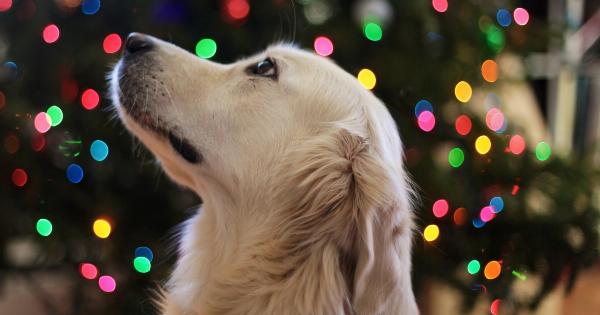For many households, setting up the Christmas tree is an exciting tradition that marks the beginning of the holiday season.
However, if your beloved furry friend begins to exhibit signs of fear or anxiety around the tree, it can put a damper on the festivities. Christmas tree phobia in dogs is not uncommon, but with some patience, understanding, and the right strategies, you can help your dog overcome their fear and enjoy the holiday season to the fullest.
1. Understand the Root Cause
Before you can address your dog’s fear, it’s essential to understand the root cause. Dogs can be fearful of Christmas trees for various reasons, including:.
- Past negative experiences, such as getting tangled in lights or knocking down the tree
- Changes in the environment or rearrangement of furniture
- Unfamiliar scents from new decorations or the tree itself
- Unsettled routine and disrupted household dynamics during the holiday season
By identifying possible triggers, you can tailor your approach to help your canine companion feel more at ease.
2. Gradual Introduction
Instead of surprising your dog with a fully decorated Christmas tree, introduce the tree gradually. Start by bringing the tree indoors and allowing your dog to sniff and examine it from a distance.
Reward calm behavior with treats and praise, reinforcing positive associations with the tree.
3. Positive Reinforcement
Positive reinforcement is an effective way to overcome fear and anxiety in dogs. When your dog approaches the tree or shows interest without displaying fear, reward them with a treat or their favorite toy.
This will help shift their focus from fear to a positive experience.
4. Familiarize with Tree Decorations
Some dogs may be frightened by new or unfamiliar decorations on the tree. Before hanging ornaments and lights, let your dog sniff and inspect them.
This process helps them become familiar with the scent and presence of the decorations and reduces anxiety when the tree is fully adorned.
5. Create a Safe Space
If your dog becomes overwhelmed or anxious around the Christmas tree, provide them with a designated safe space. This can be a cozy corner in another room where they feel secure or a crate covered with a blanket to create a den-like environment.
Ensure this space is equipped with comforting items such as their bed, toys, and a soothing playlist of classical music.
6. Calming Techniques
Utilize calming techniques to alleviate your dog’s anxiety. Classical music, white noise machines, or calming pheromone diffusers can create a relaxing atmosphere.
Additionally, consider using anxiety wraps or vests specially designed to provide gentle, constant pressure, which can have a calming effect on many dogs.
7. Counterconditioning
Counterconditioning involves teaching your dog to associate positive experiences with the Christmas tree. Over time, gradually expose your dog to the tree while engaging in activities they enjoy, such as playtime, training sessions, or mealtime.
This technique helps them form positive associations with the tree and reduces fear.
8. Enlist Professional Help
If your dog’s fear of the Christmas tree is severe or persists despite your efforts, it may be beneficial to consult a professional dog trainer or a veterinary behaviorist.
These experts can assess your dog’s behavior, provide tailored strategies, and guide you through the process of desensitization and counterconditioning.
9. Set a Calm Example
Dogs are highly observant of their human family members. If you exhibit fear or anxiety around the tree, your dog may pick up on those emotions.
Stay calm and relaxed when near the tree, as your own composure can help reassure your canine companion that there is nothing to fear.
10. Avoid Forceful Exposure
Remember, forcing your dog to confront their fear will only heighten their anxiety. Avoid dragging or pushing your dog towards the tree or using punishment as a means to stop their fearful behavior.
Patience, understanding, and positive reinforcement are key.





























